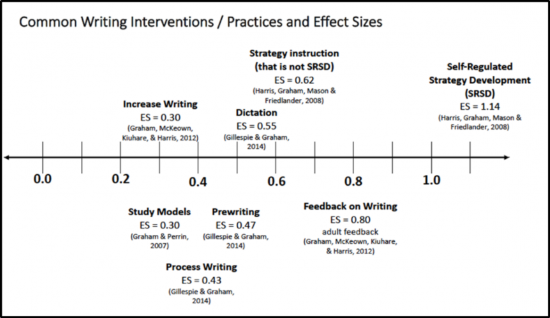 As administrators engage in conversations and feedback with teachers about the classroom practices they observe, it can be a challenge to stay informed about the evidence-based instructional practices that are most effective for our increasingly diverse classrooms. Good news! There are resources that administrators can add to their observation toolkit that can help them focus these conversations on strategies that have been proven to be effective with all students, and in particular with students with disabilities and English Language Learners. One such tool is the RSE-TASC Explicit and Specially Designed Instruction Walk-Through Tool.
As administrators engage in conversations and feedback with teachers about the classroom practices they observe, it can be a challenge to stay informed about the evidence-based instructional practices that are most effective for our increasingly diverse classrooms. Good news! There are resources that administrators can add to their observation toolkit that can help them focus these conversations on strategies that have been proven to be effective with all students, and in particular with students with disabilities and English Language Learners. One such tool is the RSE-TASC Explicit and Specially Designed Instruction Walk-Through Tool.
The RSE-TASC Walk Through tool was developed based on a review of over 40 years of research on effective instructional strategies. A set of lesson planning and delivery practices was identified, where each practice had been validated as effective in improving learning of students with disabilities by at least three research studies. Examination of these practices led RSE-TASC specialists to conclude that the framework referred to as either Explicit Instruction or Explicit Direct Instruction comprised many of these practices. On further examination of the research literature, there was significant evidence that this framework is effective for all students as well as for students with disabilities. In just one meta-analysis of the research of explicit instruction (there have been many), Adams and Engelmann (1996) found that the mean effect size per study using explicit instruction was more than .75 (effects of .60 and above in education are generally considered to have a substantial positive impact). They found that the effect sizes were nearly the same for all students as for students with disabilities, thus indicating the teaching strategy is effective for students in general education as well as those identified with disabilities.
The walk-through tool can be accessed by clicking here. It is organized into four primary sections:
- Safe and Accessible Environment
- Lesson Components
- Elements of Instructional Delivery
- Specially Designed Instruction
The first three sections all comprise both teacher and student “Look-Fors”; i.e., observable teacher or student actions that have research support for whole class instruction. The last section describes the elements of specially designed instruction that ensure that instruction is responsive to that individual student’s needs resulting from his or her disability and that need to be considered per regulations for any student with a disability in a classroom . This section includes:
- Access; i.e., ensuring that every student with a disability has access to grade level standards
- Targeted instruction in skills and strategies designed in consideration of the student’s disability, as identified on the student’s IEP
- Accommodations to provide access to the classroom environment and materials, as identified on the student’s IEP
Consider downloading the walk-through and sharing it with teachers for discussion, and to cross-walk it with your school’s observation rubric. Many teachers and administrators have found the clarity of the Look-Fors very powerful for engaging in meaningful conversations about the craft of teaching diverse students.
Adams, G. L., & Engelmann, S. (1996). Research in Direct Instruction: 25 Years Beyond DISTAR. Seattle,WA: Educational Achievement Systems.


 Data-Driven Decision-Making
Data-Driven Decision-Making  Increasing Post-School Success through Interagency Collaboration
Increasing Post-School Success through Interagency Collaboration  How Can We Improve Deeper Learning for Students with Disabilities?
How Can We Improve Deeper Learning for Students with Disabilities?  Positive Classroom Management: Creating an Environment for Learning
Positive Classroom Management: Creating an Environment for Learning  Self-Determination Skills Empower Students of All Ages
Self-Determination Skills Empower Students of All Ages  Fidelity of Implementation: What is it and Why does it Matter?
Fidelity of Implementation: What is it and Why does it Matter?  Rethinking Classroom Assessment
Rethinking Classroom Assessment  A Three-Step Approach to Identifying Developmentally Appropriate Practices
A Three-Step Approach to Identifying Developmentally Appropriate Practices  Transforming Evidence-Based Practices into Usable Innovations: A Case Study with SRSD
Transforming Evidence-Based Practices into Usable Innovations: A Case Study with SRSD